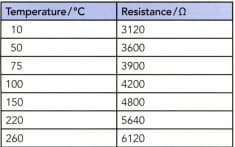David Sang and Graham Jones Solutions for Chapter: Thermal Physics, Exercise 5: Questions
David Sang Physics Solutions for Exercise - David Sang and Graham Jones Solutions for Chapter: Thermal Physics, Exercise 5: Questions
Attempt the free practice questions on Chapter 19: Thermal Physics, Exercise 5: Questions with hints and solutions to strengthen your understanding. Physics for Cambridge International AS & A Level Coursebook 3rd Edition Digital Access solutions are prepared by Experienced Embibe Experts.
Questions from David Sang and Graham Jones Solutions for Chapter: Thermal Physics, Exercise 5: Questions with Hints & Solutions
Convert each of the following temperatures from the Celsius scale to the thermodynamic scale:
Convert each of the following temperatures from the thermodynamic scale to the Celsius scale:
The electrical resistance of a pure copper wire is mostly due to the vibrations of the copper atoms. Table 19.1 shows how the resistance of a length of copper wire is found to change as it is heated. Copy the table and add a column showing the temperatures in. Draw a graph to show these data. (Start the temperature scale of your graph at ) Explain why you might expect the resistance of copper to be zero at this temperature.

The variation of resistance with temperature for a length of copper wire.
